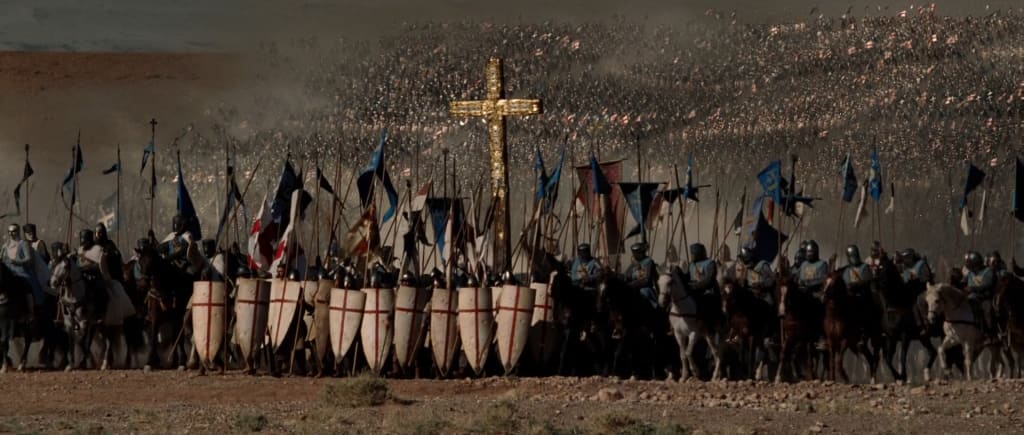The Church, the Tribes, and the Roman Empire
Who Will Secure the Fallen Legacy

“Pride goeth before destruction, and an haughty spirit before a fall. (Proverbs 16:18) Usually we just abbreviate it to “pride goeth before a fall”.” (Glen, ‘The King’s English’). A universally famous quote from the King James Bible sums up how too much of a good thing will eventually lead to ruin. History has a way of repeating itself. Just like the Grecian Empire before them, the mighty Roman Empire also experienced a great ‘fall’. But, was the Romans defeated by pride …or fear? Rome fell in August 410 at the hands of Alaric the Visigoth, erecting Alaric as the next successor to the Romans’ fragile legacy lineage. After Alaric’s death, Ostrogothic King Theodoric emerges through the challenges and responds by preserving what was left of the Roman Empire and merging its cultures with the Germanic tribes. Out from all of this chaos, the ‘true successors’ of Rome came to be the Roman Catholic Church; their peaceful influence over the invading barbarians showed how the Germanic leaders were just ‘inheritors’ to what the Catholic Church had already established. Although the Visigothic leader Alaric conquered Rome, and the Ostrogoth King Theodoric, after him, saved its traditions and history; the Roman Catholic Church still remains the only real successors of the fallen Roman Empire by providing stability for the Medieval Period.
Just like Charlemagne, Visigothic leader Alaric also had a powerful name meaning ‘the Ruler of All’. In the year 410 A.D., Alaric succeeds in his quests of conquering the Roman Empire. “On 24 August 410 Alaric the Visigoth achieved the ultimate goal … the crumbling Roman Empire of the West” (Davies, 16). Many Germanic barbarian leaders attempted in what Alaric and his army had already accomplished. “On the third day, Alaric led his triumphant host forth … and marched southward … Alaric’s people, known as the Visigoths –had been the first of the Germanic hordes to break into the Roman Empire” (16). During the collapse of Rome, there was endless struggle and war between the different Germanic tribes for power:
[“I once aspired [he said] … to obliterate the name of Rome; to erect on its ruins the dominion of the Goths … The decade following Alaric’s death was filled with violent conflict not only between the Visigoths and their rivals but also among the leading Visigothic families” (18).]
Chaos wildly spread throughout the conquered nation as the fragile Roman society continues to be torn father apart. The reign of King Theodoric brings hope back to the people as they try to rebuild a new kingdom from Rome’s ashes.
After Alaric’s death, Ostrogothic king Theodoric rose to power over the fallen Roman Empire. Unlike Alaric, King Theodoric decides not to obliterate all Roman traditions, but to merge them with the Germanic tribes’ cultures. This was his attempt to preserve Rome within his Germanic kingdom. “The ultimate ambition of the Ostrogothic king was to blend Roman and Germanic traditions, and to provide a peaceful environment for the growth of culture” (Slocum, 43). King Theodoric brings peace and government to the fragile people by marrying off his daughters to different tribe leaders. “… a foreign policy that made extensive use of marriage diplomacy. … In this way, he created an intricate system of alliances … while carefully maintaining the Ostrogothic kingdom as the center” (43-44). Here, Theodoric unites the Germanic tribes, while linking everyone together under his new Ostrogothic Empire. Despite the feuding tribal leaders and the collapsed empire, the Roman Catholic Church still remains untouched as the last standing piece of what once was Rome.
The Roman Catholic Church has existed for many generations. They are considered the ‘true successors of Rome’, simply because they have survived the numerous attacks from the invading Germanic tribes. “The church would have been swept away by this flood of barbarians had it, like Rome, been solely a tangible thing. … the church managed to survive because structures and personalities were not essential to its continuance” (Vidmar, 106). Unlike Rome, the Catholic Church had no armies; therefore was no opposing issue, but their faith in God kept them from becoming ruins as well. “What especially aided the church was that the barbarians were desirous of anything Roman –and that included Christianity” (106). The barbarians may have destroyed the Roman threat, but that was not enough for them. They wanted to completely possess the entirety of Rome by accepting their religion of Christianity. “Roman institutions and armies had to be gotten rid of because their continuation threatened the existence of the tribes, while Christianity posed no such threat and still maintained an aura of Romanitas” (106). The Germanic tribes wished to own the society of Rome in every way, and the Church saw that as an opportunity. “Hence the barbarians readily converted to Christianity. … Cooperation between bishops and tribal leaders assured both the political control of a region and its spiritual life as well” (106-107). The Church became such a powerful influence because it had the security from the tribal leaders, which saved them from the same destruction that Rome endured. In turn, the Germanic leaders inherited the guidance and faith from the Church, teaching them how to secure the fragile nation from unravelling again.
In conclusion, the Roman Empire was inevitable doomed to fall, but was not completely wiped out. Ruler Alaric and his Visigoths demolished the great empire of Rome in order to establish his own Germanic Kingdom. Following Alaric’s death, King Theodoric sought out to rebuild and fuse what was left of Rome and its history with his own Ostrogothic traditions. But, none of Theodoric’s cultural accomplishments would have been possible if were not for the peaceful coexistence of the Roman Catholic Church. The Roman Empire may not have lasted forever, but out from its downfall arose the Medieval Period carrying on its legacy alongside the surviving Roman Catholic Church.
Works Cited Page
The King’s English: Through the King James Bible, Phrase by Phrase. “Pride Goeth Before a Fall.” Glen. http://kingsenglish.info/2011/01/16/pride-goeth-before-a-fall/ (accessed February 25, 2015). Web.
Davies, Norman. Vanished Kingdoms: The Rise and Fall of States and Nations. New York, NY: Viking Penguin, a member of Penguin Group (USA) Inc., 2012. (16, 18). Print.
Slocum, Kay. Medieval Civilization. Belmont, CA: Laurence King Publishing, Thomson Wadsworth, 2005. (43-44). Print.
Vidmar OP, John. The Catholic Church Through the Ages: A History. Mahwah, NJ: Paulist Press, 2005. (106-107). Print.
About the Creator
Robyn Welborne
I am an aspiring creative writer who is currently working for my double Associate’s Degree in English. My writing has no limits and no filter. Anything and everything from all genres; if I think about it, then I will write it down. Enjoy!






Comments
There are no comments for this story
Be the first to respond and start the conversation.